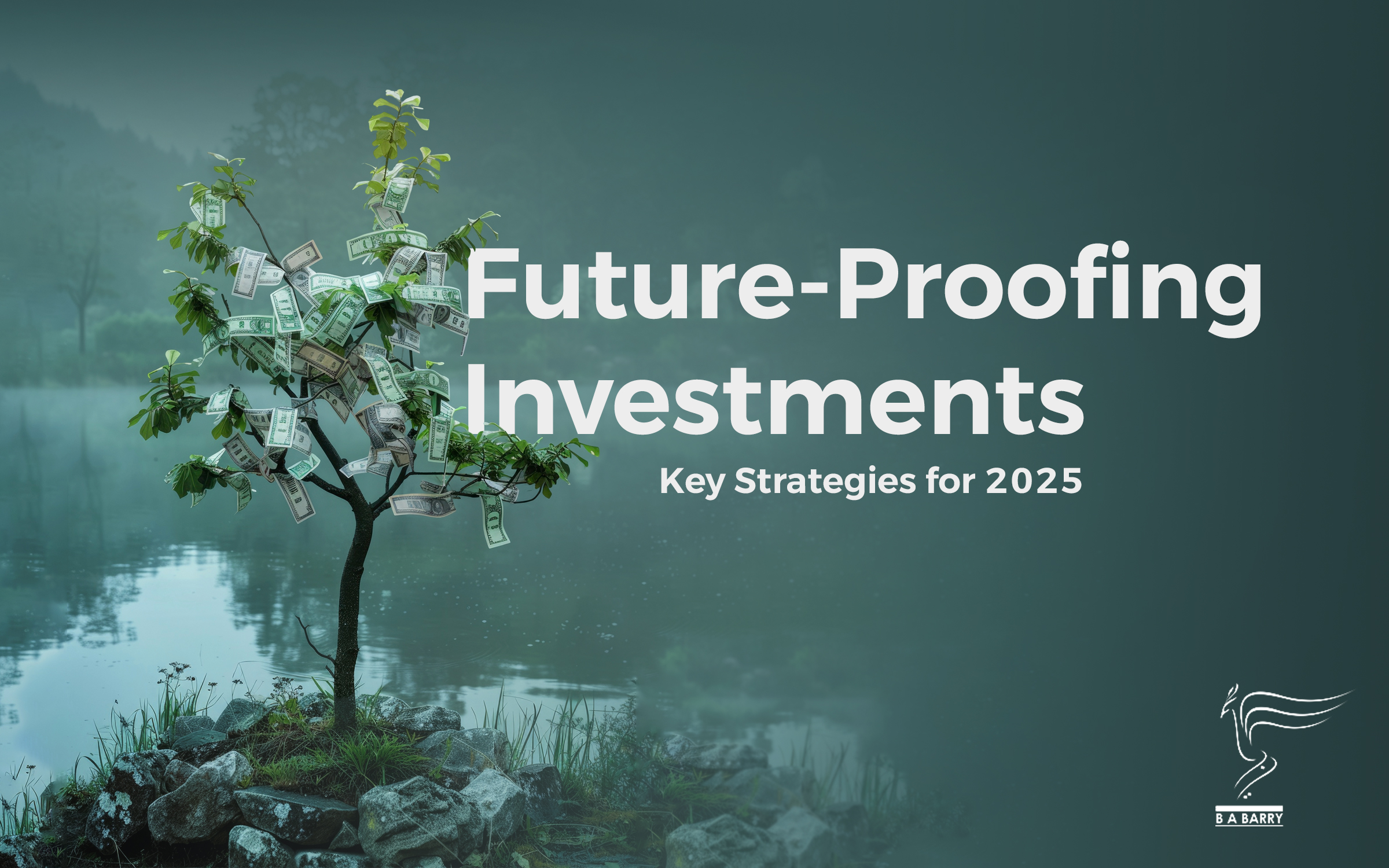- Tokyo : 19:18 |
- Singapore : 18:18 |
- Dubai : 14:18 |
- London : 10:18 |
- New York : 05:18 |
- Sydney : 21:18

Acquiring assets of any sort and then making sure you are able to get the most value out of these in the long term are two different things. The modern financial landscape is characterized by economic uncertainty and market volatility. To cope with these issues, every investor needs to future-proof their investments.
We have now come to a point where future-proofing investment is no longer a luxury but an absolute necessity. This is the only way to protect and grow your wealth at a steady pace while minimizing the damage caused by internal or external risks.
The CEO of B A Barry Group Mr. Basem Barry Says
“The only way to ensure long-term financial stability as well as to safeguard your assets or investments is by assessing potential risks and addressing them with effective mitigation strategies.”
This blog delves into some of the most valuable investment approaches and future-proofing strategies that most seasoned investors recommend for the year 2025. These strategies will ensure complete protection of your assets both today and in the future so keep on reading till the end.
Assets Diversification
Always Invest in Strong Fundamentals
Technology and Data Integration
Go for Real Estate Investment Trusts (REITs)
Regularly Conduct Risk Inventory of Your Investments
Focus on Long-Term Trends
Asset diversification is a key step in future-proofing your investments. It basically means spreading your assets across different asset classes like real estate, cash, stocks, commodities, or bonds which reduces risks as all of these assets behave differently during different market cycles.
You can start the diversification of investments by assigning broad allocations to each of your asset classes. You need to make sure these allocations align with your risk tolerance as well as time horizon.
After the broad asset allocation, you can further diversify within each asset class which helps mitigate concentration risks. You can do this by investing in companies of different sizes or by investing in emerging or developed markets.
Investors can also diversify their assets among different currencies. This way if a single currency suffers owing to recession or a country’s economic policies, they will still be able to protect their other assets.
Investors who are looking to build a resilient portfolio need to consider investments that come with strong fundamentals. Businesses that have little to no debt and a sufficient cash flow are considered to have strong fundamentals.
The fundamental analysis involves looking at the competitive edge, current balance, profitability, and business model sustainability of the company you are about to invest in.
If all these factors indicate a positive pattern there is a high chance your investment will not suffer due to unexpected downturns or market volatility.
To better manage your investments or assets you need to rely on data as well as advanced technology integration. Using data, investors can generate real-time insights into their current investment success status which can improve decision-making.
Technology integration allows you to consolidate data from multiple sources giving you a holistic view. This comprehensive view can eventually drive better performance and mitigate risks.
A REIT is an entity or firm that owns, operates, or manages high-income generating real estate properties. These firms own commercial or residential buildings whose shares you can buy. The profits that these buildings generate are distributed among all the shareholders which gives investors a steady cash flow through dividend payments.
These firms are required to distribute at least 90% of their taxable incomes to the shareholders which makes these an ideal option for investors.
The main benefit of investing in REITs is that it allows investors to access various properties without having to worry about directly managing or operating them.
Well-managed REITs have historically outperformed other investments like stocks or bonds which shows they can ensure consistent long-term financial stability for you as well.
You need to clearly and thoroughly view your assets as well as your net worth to identify and address risks. A risk inventory will help you identify imminent threats which is the first step in protecting your wealth.
The insights from the risk inventory can help you avoid making impulsive, emotional, or irrational decisions that do not align with your long-term goals.
In your risk inventory, you can look at your assets like real estate, savings, or other financial holdings in terms of income loss, concentration, currency, counterparty, and litigation risks.
This assessment can help make sure your financial plans or goals align with your tolerance which leads to more sustainable investing.
You need to identify long-term trends or themes to get a more forward-looking perspective. This can help you uncover potential investment opportunities that guarantee long-term safety.
For example, there has been a global interest in clean energy in recent years. One step in this direction is the production of electric vehicles that use copper-based batteries.
This has led to an increase in copper prices owing to its high demand but limited supply. Investors can leverage this trend and invest in copper to stay ahead of the curve for many years to come.
Your investments need future-proofing if they are to give you the best ROI as well as long-term financial stability. By harnessing the power of technology and data and by regularly analyzing risks, trends, and market changes, it is possible for investors to be more proactive when it comes to asset management.
Using these simple strategies, investors can generate a steady revenue irrespective of the market stress or the changing fiscal policies. This ensures they are able to navigate the ever-changing business landscape of the 21st century with more confidence and clarity.
Visit B A Barry Group today to get the best eco-friendly trading, operations, and logistics solutions for your businesses worldwide.